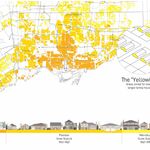My theory on what makes the difference - The ideal state would be a GO connection that
a) picks you up or lets you off at or close to your driveway (quick and weatherproof)
b) warns you in real time that the bus is approaching
c) has a predictable time to reach the GO station (advance assurance of connection)
d) reliably makes the connection
e) is relatively comfortable and uncrowded
f) requires zero or minimal transfer en route
My theory would be that current transit knowingly or inadvertently violates these ideals, each of which causes stress or reluctance to use transit. Cost is not really a dealbreaker - owning an extra car is not cheap, after all. Commuting is stressful, for a variety of reasons, and driving to GO gives a sense of control and (subjectively, if not truthfully) removes some of these stresses.
The self-driving car vision and various existing apps address some of these pretty well, which is why we dream about them. (For instance, I find that having the Airline Limo app notify me when the call has been assigned to a car, and notify me again when the car is approaching, takes huge amounts of stress out of getting to the airport).
I wonder whether municipal transit, with their one-size-fits-all, big lumbering vehicle that you aren't confident will come until you actually see it mentality, are up to the challenge of customising their service to attract GO riders.... Things as simple as better pedestrian shelters and routings within backstreets, with info displays that tell both time to next bus and estimated time to GO station, might make the connection "feel" more secure.
If they just want to keep running the status quo transit grid,with status quo vehicles, on the main streets only, I don't expect that much can change.
- Paul
View attachment 101743




